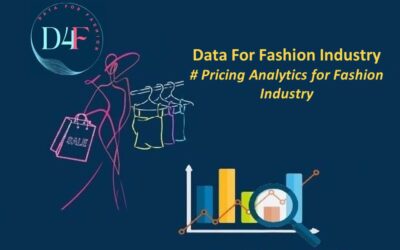Pricing Analytics:
Pricing analytics refers to the use of data analysis techniques to understand and optimize pricing strategies. It involves gathering and analyzing data related to factors such as customer behavior, market trends, competitor pricing, and internal costs. By applying statistical methods, machine learning algorithms, and other analytical tools to this data, businesses can gain insights into pricing dynamics and make informed decisions to maximize revenue and profitability. Pricing analytics can help businesses determine optimal price points, identify pricing opportunities and risks, forecast demand, and assess the impact of pricing changes.
In the fashion world today, pricing your products right is super important. It affects how people see your brand and where you stand in the market. Promotions, like sales between seasons, used to help clear out old stock, but now, with tech-savvy consumers and lots of competition, these are not effective. Many people are waiting for discounts before they buy, which means brands have to work harder to sell at full price.
To keep up, brands are launching new stuff more often, having more sales events, and retiring old items strategically to keep making money. Some retailers have embraced advanced analytics for pricing, but not everyone’s doing it yet, even though it can boost sales a lot.
Overall, pricing analytics helps retailers make smart pricing decisions, but it’s about more than just numbers. It’s about combining data analysis with the art of pricing to meet the challenges of today’s fashion industry.
Advanced Analytics in Pricing:
It is a complex subject because it involves external and internal variables and parameters involved in
the process.
External factors like competition, commercial events, and even the weather can all affect pricing decisions. For example, if a competitor has a big sale on similar products, it might impact how many items you can sell.
Internal factors, like how much it costs to make a product and historical sales data, are also important. You need to know how much you’re spending to make sure you’re setting the right prices to make a profit.
One key concept in pricing is price elasticity, which measures how much customer demand changes when prices change. Retailers want to find the right balance where they can charge enough to make a profit but not so much that customers stop buying.
There are different ways to model price elasticity, from simple methods like logistic regression to more complex techniques like neural networks. Each has its pros and cons, but the goal is to find the best model for the business’s needs.
Applications of Price Analytics:
Markdown Optimization
Markdown optimization for stock clearance involves strategically discounting prices and timing product launches to clear excess inventory, particularly crucial in fashion where seasonal items quickly become obsolete. Retail giants like H&M tackle this challenge by implementing programs to optimize prices and minimize discounts through demand forecasting, aiming to reduce inventory risks and maintain profitability despite operating on low margins.
Stock Clearance Optimization
In 2012, Zara collaborated with the University of California, Los Angeles, to enhance its clearance process, typically occurring after each of its two selling seasons annually. The research aimed to address challenges in distributing products effectively across its global stores, as manual clearance planning proved inefficient. The science team proposed a model-based approach, leading to a boost in Zara’s revenue by 2.5%, totaling an additional $24 million, demonstrating the effectiveness of the optimized strategy.
Cross-Channel Pricing Optimization
Cross-channel pricing optimization involves strategically setting prices for both offline and online sales channels. Retailers like Decathlon utilize advanced analytics to differentiate pricing strategies across channels. They automate pricing and optimize online marketing with software solutions, while also employing dynamic pricing to adjust prices according to their strategy. This trend reflects changing consumer expectations, as different pricing strategies emerge for various services or channels.
Optimizing Pricing for the Marketplace
Optimizing pricing for the marketplace involves determining the best price that customers are willing to pay. Online giants like Zalando and AboutYou use artificial intelligence techniques to automate their price setting processes. This software relies on price finding algorithms that consider various factors such as stock levels, product categories, competitor prices, and customer demand. Based on the algorithm’s results, prices can be adjusted to maximize profits or achieve other objectives. The flexibility of these algorithms allows retailers to automatically change prices according to their specific needs, whether it’s once a week or multiple times a day.
Pricing optimization by advanced analytics is a complex task requiring significant time and resources, often leading large companies to be the first to adopt such approaches. Properly incorporated algorithms can enhance core merchandising processes, resulting in increased sales and margins. This underscores the importance of forecasting methods in pricing and suggests a likely increase in analytics adoption in the coming years. However, implementing a cultural shift towards pricing optimization can be challenging, especially in industries like fashion where pricing is considered an art integral to brand strategy beyond mere value considerations.
Python Implementation for Retail Price Optimization:
To understand how we can use the machine learning model for Retail Price Optimization, please click on the below link TBC
Let me give you some snapshots here for your understanding.

